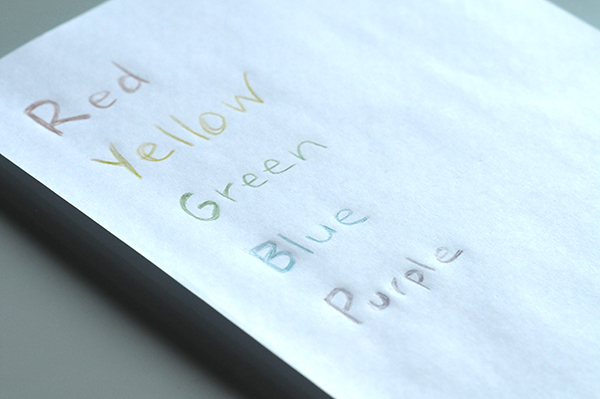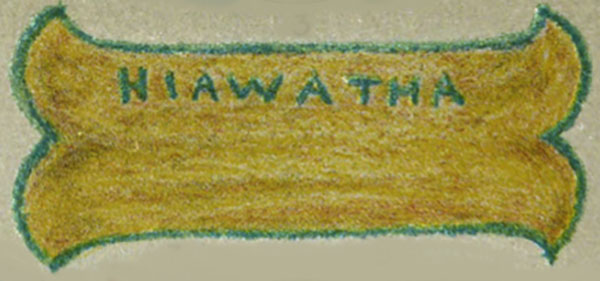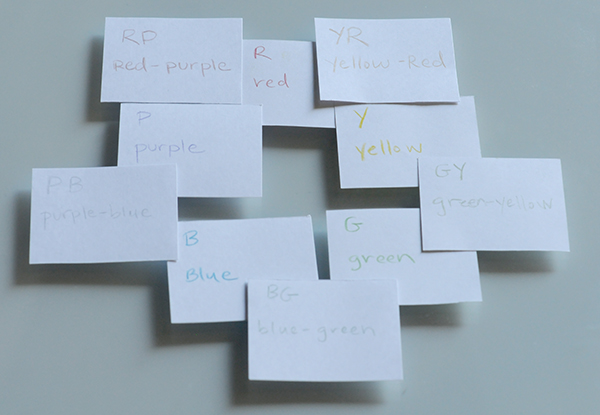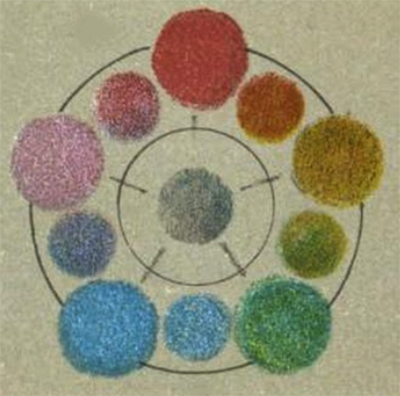
This is an excerpt from Chapter II of A Color Notation, the 1905 book that introduces the Munsell color order system using the three dimensions of color, HUE, VALUE, and CHROMA, to define and differentiate color. Part II of this book provides a course of study for teachers from first to ninth grade. The lessons are derived from a series of lectures given by Albert at the Massachusetts Normal Art School.
Piggybacking off the first lesson, where children are taught about basic HUES – Red, Yellow, Green, Blue, and Purple, in this lesson, students recap the first lesson and move on to look at HUE intermediates – the colors between these primary colors, Yellow-Red, Green-Yellow, Blue-Green, Purple-Blue, and so on.
SECOND GRADE LESSONS
1-3. Review sequence of five middle hues.*

4. Show a hue intermediate between red and yellow. Find it in objects.
5. Compare with red and yellow.
6. Recognize and name yellow-red. Match, imitate, and write YR.
7-8. Show green-yellow between green and yellow. Treat as above, and write GY.

9-10. Show blue-green between blue and green. Treat as above, and write BG.
11-12. Show purple-blue between purple and blue. Treat as above, and write PB.
13-14. Show red-purple between red and purple. Treat as above, and write RP.

Using crayons, the color abbreviations are written on the back of cards.

For fun, we used the Munsell crayons (no longer manufactured) to create a hue circle.
15-20. Make circle of ten hues. Place Intermediates, and memorize order so as to repeat forward or backward. Match, imitate, and write by initials.
21-25. Find sequence of ten hues on color sphere. Compare with hues of natural objects.

From Plate 2. in A Color Notation
26-30. Review, using any two hues in sequence for borders and rosettes.

From Plate 2. in A Color Notation
Aim.—To recognize sequence of ten hues, made up of five middle* hues and the five intermediates. To name, match, write, imitate, and arrange them.
* The term middle, as used in this course of color study, is understood to mean only the five principal hues which stand midway in the scales of value and chroma. Strictly speaking, their five intermediates are also midway of the scales; but they are obtained by mixture of the five principal hues, as shown in their names, and are of secondary importance.
Check out more in this series:
Teaching Color to Elementary Students: First Grade Lesson



Leave a Reply